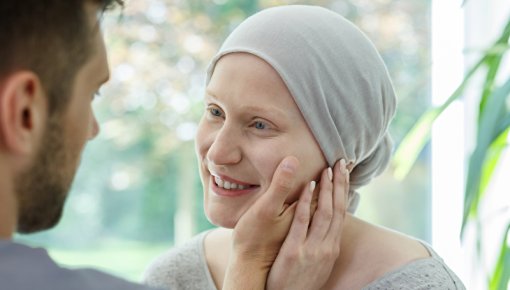For many people, hair loss is one of the worst side effects of chemotherapy – for instance, because then others can tell that you have cancer. It can also affect how people perceive themselves as men and women. In women, the loss of hair on their scalp is the main issue; in men it is the loss of facial and body hair as well.
There are various ways to deal with these problems: If you have long hair, you could get it cut short before the start of chemotherapy, for instance. Then when hair starts to fall out, the clumps that are lost seem less alarming. Shaving the hair off yourself prevents you from feeling like you're constantly losing hair – and will save you from having to keep removing hair from your bed, clothing or bathroom.
You can cover a bare scalp with hats, scarves or caps, as well as wigs made of either artificial or real hair. Wigs made of real hair can be cut to match your previous hairstyle and look very natural. They are more expensive than wigs made of artificial hair, though. If you decide to wear a wig, the doctor who is giving you the chemotherapy can write you a prescription for one. In Germany, statutory health insurers usually cover part of the costs for artificial hair wigs.
Eyelashes and eyebrow hair that falls out can be replaced using artificial lashes and make-up. If you’ve never put on make-up before, you can find a lot of online videos offering tips and suggestions. Some hospitals and support groups even offer special courses.
Another option is to meet with others who are affected by chemotherapy-related hair loss. You could also get support from a specialist in psycho-oncology and talk with them about any worries or anxieties that you have related to the hair loss.
It is important to be very careful when washing your hair until it has grown back completely. That includes things like not washing it more than twice a week, using baby shampoo, not drying it with a hairdryer for too long or at too hot a temperature, and not using any hair dyes.

